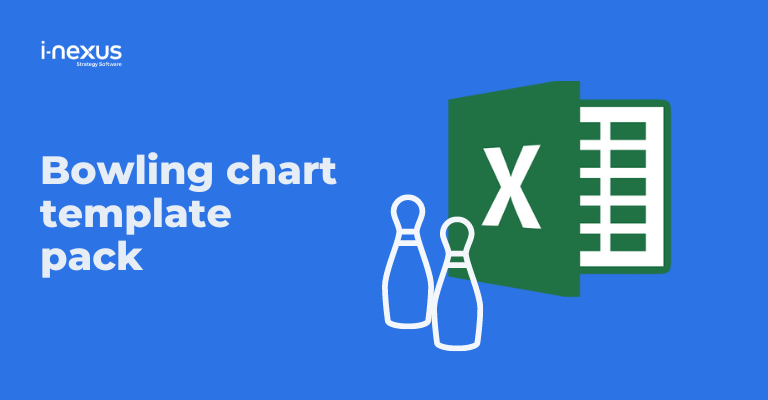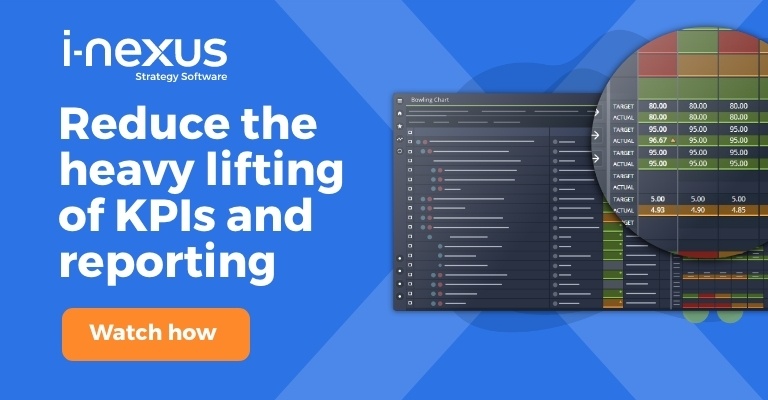The power of Hoshin Kanri is well documented, but how can you fast-track success? Spreadsheet templates or software are your options, and these are their pros and cons.
Written by: Carolyn Gibson, Senior Strategy Advisor
So, you’ve decided that your organization needs better strategy deployment, better Strategy Execution, and better strategic alignment, and Hoshin Kanri (Policy Deployment) is the way you are going to achieve it.
You've identified your Breakthrough Initiatives which will create a step change in your performance. You've understood the importance of adopting a catchball approach to cascading the goals and supporting projects.
The next step is work out how you are going to manage the adoption of this new process. From a technological perspective, you have two main options:
- Manage using spreadsheet and PowerPoint templates
- Manage with a dedicated Hoshin Kanri system.
I will explain the pros and cons of each below.
The benefits of using simple templates
Whether it's Excel, Google Sheets, PowerPoint or SharePoint, there are some clear advantages to using free, simple templates:
- They save deployment time. Often you don’t have even have to spend the time designing them yourself, if you are happy with the examples available to download.
- They save training effort. Everyone knows how to use spreadsheets and PowerPoint, so you are not going to have to spend time training in the tool, only the process.
- The templates fit in with existing software and documentation strategies. You can use your existing document storage area, e.g. SharePoint, to store and share the documents produced.
Here are some examples to download today:
Examples of using simple templates for Hoshin Kanri
As a result of templates being readily available for the full spectrum of Hoshin Kanri, many companies start off managing Hoshin with these simple templates.
In a single team, these can be quite robust.
I have seen a single spreadsheet that held a small company’s X-Matrix, Bowling Charts and metric charts, with other tabs for the data that feeds the templates.
This works great for the first three months, six months, nine months even.
Then problems start to build up.
The disadvantages of using simple templates
As Hoshin becomes ingrained in your organization, so too will the common growing pains associated with the methodology. When it comes to Hoshin templates, the disadvantages are substantial:
- You want to make changes, but can’t always remember how everything links together or how the formulas work.
- You want to extend this downwards in the company, say to individual teams, but the X-Matrix can only hold the department level improvement priorities. So, you create separate spreadsheets for them, but then struggle to manage them together.
- You want to build more data in, but find that the more and more data you load into the spreadsheet, the longer it takes to load and save and the more unstable it becomes.
- You want to share the burden of keeping it up to date more widely around your team, but are afraid that they will break it.
- A colleague wants to use it in another department, but then you cannot agree a process for keeping the data and process aligned.
- You need to include sensitive strategic information, but can’t hide it from wider view.
- Countermeasures and action plans exist separately and errors start to occur in copying data across.
- The person charged with making it all work leaves the company, and you have to start from scratch again.
All of a sudden, one, two, even a whole team of people are working full time trying to keep the documentation up to date, consistent, and available when required - and failing.
I have seen consultancies, manufacturers, retailers, travel companies, banks and pharmaceutical companies all come to the same realization.
After one or two years of coping, it falls apart, and they wonder how to unravel the mess they now find themselves in.
They love the process, but the technology is holding them back from achieving their goals.
The benefits of a dedicated Hoshin Kanri software package
These disadvantages are where a dedicated Hoshin Kanri software package comes in.
Apart from providing the templates required, a good Hoshin Kanri package should help with the following:
- It should provide a single source of the truth. An objective, metric, action plan or countermeasure should only have to be entered once, and then it can be pulled into any report as needed.
- It should provide security around access and visibility. People should be able to edit only those things that they oversee, and nothing else, and you should be able to hide sensitive information. The chance of breaking it is reduced substantially.
- It should provide security around visibility. You should be able to hide sensitive information and manage visibility to only those who need to see it.
- It should be scalable - both horizontally across an organization and downwards - providing both more visibility and increasing alignment.
- It should be able to pull data directly and automatically from other systems, reducing double entry, removing errors and increasing real time accuracy.
You might wonder why people don’t just start with a dedicated package. Good question.
The disadvantages of a dedicated Hoshin Kanri software package
Hoshin Kanri software is not necessarily something that all organizations will want:
- It provides a single source of the truth. Executives who don’t want to share data will resist it.
- It provides wider access to data and therefore performance. Middle managers who don’t want their lack of performance visible will resist it.
- It needs to be integrated into the existing data ecosystem of your company, instead of sitting on top of it. The IT department therefore may initially resist it.
- Hoshin Kanri software will be new to your users, and therefore there is a lag when people have to learn how to use the technology. End users therefore may resist it if on-boarding support isn't effective.
- Of course, up front there is an additional cost, even if long term it will save administration time. Procurement may therefore resist it.
- As a result, the resistance is simply greater. More change management and therefore more senior management commitment and effort is required at the outset.
The final verdict
Companies that have top level commitment to Hoshin Kanri can implement a dedicated package immediately and swiftly reap the rewards.
For everyone else, you may have to accept that adopting Hoshin Kanri will be a painful journey for the first year: starting with spreadsheets, learning the strengths and weaknesses for yourselves, and then making the jump to dedicated software when you have no other options.
At least you can console yourself that many of the best companies have done just the same.
Take the next steps in your Hoshin Kanri journey
To learn more about how i-nexus can support your next steps with Hoshin Kanri, click any of the links below:
- Download our Hoshin Kanri eBook: Discover how Hoshin Kanri is supporting organizations to drive greater business results
- Read how our software help businesses like yours: Access our overview of i-nexus Hoshin Kanri software
- Book a demo of our platform: See first hand the power of i-nexus, the only Strategy Execution Management platform that allows you to digitalize and connect multiple X-Matrices, Bowling Charts, A3 reports and much more
About the author
Carolyn Gibson is a senior strategy advisor and certified Hoshin Kanri facilitator working with Fortune 500 companies on building their Strategy Execution capabilities. Her career spans disciplines, industries and locations for over twenty years, with a golden thread running throughout of an obsessive focus on the mechanical detail of how organizations achieve their goals.




